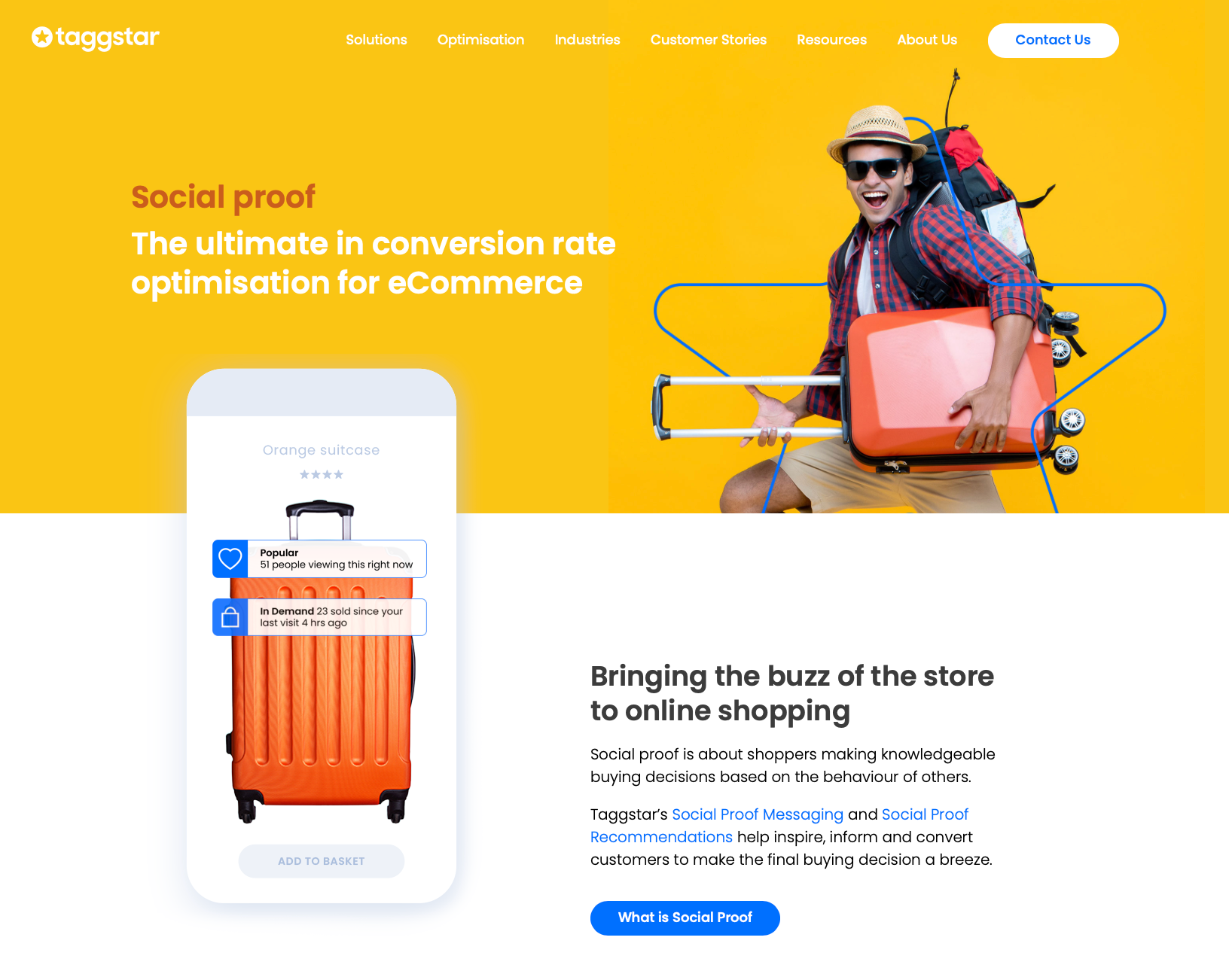Boosting your Bottom Line: Tips for Improving Conversion Rates

Are you looking to increase your website's performance and turn clicks in to customers? If yes, you're in the right place.
My aim with this post is to introduce you to the world of conversion rate optimization (CRO) and share actionable steps you can take to improve conversion and unlock the full value from your website.
Start with Analysis and a Site Audit
Your journey to conversion rate optimization excellence begins with data analysis, to help gain a better understating of how your website is performing.
Identify what pages visitors are landing on your site and start to build a journey flow, to visualise how easily (or not) they are able to navigate your site.
You'll often find that a high percentage of customers leave your site without completing a purchase. This could be because they've clicked a broken link, hit a slow loading page or haven't been given a clear call to action to progress.
Reviewing your analytics data, will help you find where pain points might be in your current user experience. Get closer to this insight and it will help you implement the right optimization strategy in the long run.
Understand your Target Audience
You wouldn't launch a marketing campaign without knowing who you want to reach, right?
So, working out exactly what your customers need finding the best way to deliver this message, product or service in an engaging way on your website is key to CRO success.
For example, (I hear this one a lot) if your customers mainly interact or shop with you in a physical retail store, you need to provide reassurance that shopping online is equally a pleasant and even more convenient experience.

Competitor Analysis
Learn from your competitors' successes and failures, this will give you valuable insight in to what digital strategies work within your industry.
Review exactly how they are operating online.
From website design, search engine rankings and content to USP positioning. Knowing how your competitors tick, will help you identify ways to outperform them and tweak your conversion rate optimization efforts more effectively.
Collect Customer Feedback
Listen to your customers. Collect feedback using a tool like Survey Monkey to capture this invaluable info on your site.

Make sure you are asking questions about the products or services you offer, but also how easy visitors found your site to use.
A great time to request product related feedback, is straight after a purchase and request user experience feedback after a repeat visit. Nobody likes these types of popups to appear straight away, that's one way to decrease conversion.
Another great and inexpensive way to understand how customers feel when browsing your site, is to sign-up Usertesting - a service where mystery shoppers record themselves using your site and provide actionable feedback.
A/B Testing
Launch AB tests to compare two elements (A vs B) of a webpage, to understand what resonates best with your audience.
Not every test you launch will generate an uplift, but get it right and you'll steadily be able to seen a improvement in metrics such as clicks, conversions or journey progression.
My post on A/B testing key principles, teaches you how to approach testing.
To run tests, start by identifying the specific element you want to improve and create two variations of it. A - the control vs B - the variant.
Using a testing tool, build your experience and then randomly assign and equal percentage of visitors (50:50) to see your test. Let it run until you reach statistical significance and then roll out the winning version.

Mobile Optimization
Today's users are mobile, and for that reason, make sure your website offers a world class mobile experience. Mobile optimization involves:
- Making sure your website's design and functionality works seamlessly across a host of different screen sizes - responsive design is best practice.
- Reducing load times of landing pages.
- Creating simple menu navigation and call-to-actions.
By thinking about your mobile experience, and prioritising a responsive design website, you will increase your chances of converting your visitors in to customers.
On Page and UX Optimization
User experience (UX) is fundamental to conversion rate optimization.
This is all about the overall experience a user has on your site, and designed correctly, it will keep visitors engaged and wanting to return.
Becomes obsessed with ensuring:
- Addressing customer pain points - solve all the reported problems.
- Intuitive navigation - menus through and call to actions.
- Clear and concise content - deliver relevant info quickly.
- Mobile experience - is fast and allows for easy product discovery.
Content Optimization
Content is everything, I'm sure you've heard that a few times before.
If you don't have informative, engaging or unique content on your site which speaks specifically to your target audience. Then your CRO efforts could potentially be being going to waste.
Publishing relevant content not only helps with gaining traffic, it allows you to convey your business as an authority and build a trust worth reputation within your niche.
Call to Action Optimization
Your call to action buttons, also known as CTAs should be so irresistible a visitor can't refuse to tap or click.
- Use clear, action orientated text for CTAs.
- Examples include - Book Now, Call Me, Sign Up Today.
- Placement of a CTA button is also important. Above the page fold usually works best.
- Some of the simplest AB tests you can run on your site are on CTA buttons, colours and placement play a big role in user experience.
- Adding > before your CTA text helps draw attention.

Improve Page Load Speed
Most visits to your website will be on a mobile, and for that reason, speed matters.
- Faster loading pages reduce bounce rates and improves overall user experience.
- Make sure your images are small in kilobytes, without compromising quality.
- Remove unwanted tags from your header or footer, the amount of calls made to a third-party server can significantly impact load time.
- Ghostery is highly recommended to check what is running behind the scenes.

Build Trust
Establishing trust with your audience, is something your site should be aiming to achieve within the first 20 seconds of a customer visiting your site for the very first time.
Displaying customer reviews and testimonials, is one of the easiest methods to convey trust. These are usually in the form of 5-star ratings, and quickly signal to customers how great your products or services are.
These can be captured after a purchase, with an automated email campaign from Google Reviews or Trustpilot. Both services are an easy way to collect this invaluable trust building feedback.
Displaying your unique value proposition on your homepage is also a great way to build trust.
Social Proofing
Showcase social proof on your website to enhance your website's credibility.
Social proof is a psychological tactic to reassure people that their actions are also being taken by others - thinks, "power of the crowd".
The most widely used example, is in the travel industry, which I've been lucky enough to see how much of a positive impact on conversion rates social proofing can have.
Have you ever noticed popup banners on a hotel accommodation page saying "this hotel was booked 8 times in the last 24 hours", that's social proof in action - and it really does work!

Taggstar is hands down the best tool for implementing this conversion rate improving tactic on your site. This topic will be covered in more detail, as it has to be one of the most interesting aspects of CRO.
Checkout Process Optimization
This is quite an old video from Google, but it's still relevant today. Ask yourself how would an experience like this make you feel?
Confusing right? In short, don't create a checkout process that asks too much from your 'ready to purchase customer'.
Shopping online is meant to be simple, avoid creating unnecessary steps in the checkout flow before asking a customer to complete their purchase.
Adding an easy way to pay for your goods or services is a must. Adding payment methods such as Apple Pay or Google Pay are easy ways to increase conversion. Offering these at the final stages of your checkout, takes away the need for manually filling out lots of fields and creates a more optimised user experience.
Offer Customer Support
Customers aren't always ready to buy on their first visit, but you should make it easy for visitors to get in touch, if they do have any questions. Offering a clear way to get in touch could result in additional conversions.
Live chat is a tried and tested support channel, with a popup usually appearing in the bottom right hand corner after staying on a particular page for longer than 20 seconds. With AI chat bots becoming more common, they can not only help answer basic customer queries, but they can create capacity for your team to offer a human touch when extra support is needed.
Phone numbers are still important in 2023, just avoid intentionally hiding them 10 pages deep on your website - customers will find it hard to forget a poor user experience.
Retention Strategies
Growing your business isn't just about increasing conversions. It should also focus on retaining existing customers and creating loyalty.
When you focus on retention rates, you also increase your lifetime customer value (LCV) another KPI that you'll hear more about soon.
Make sure you are tracking how often a customer is purchasing and then you create a highly personalised marketing campaign to select customers who haven't been on your site for longer than you'd like.
Conclusion
Improving conversion is not a quick or easy process, it requires adopting a continuous improvement mindset. But trust me, the time and effort you devote now will be worth it in the long run.
By starting to learn about the different aspects of CRO you'll be on your way to steadily improved conversion rates in next to no time.
All of the topics (and more) above will be covered in future posts, but what you've read so far should get you thinking.
